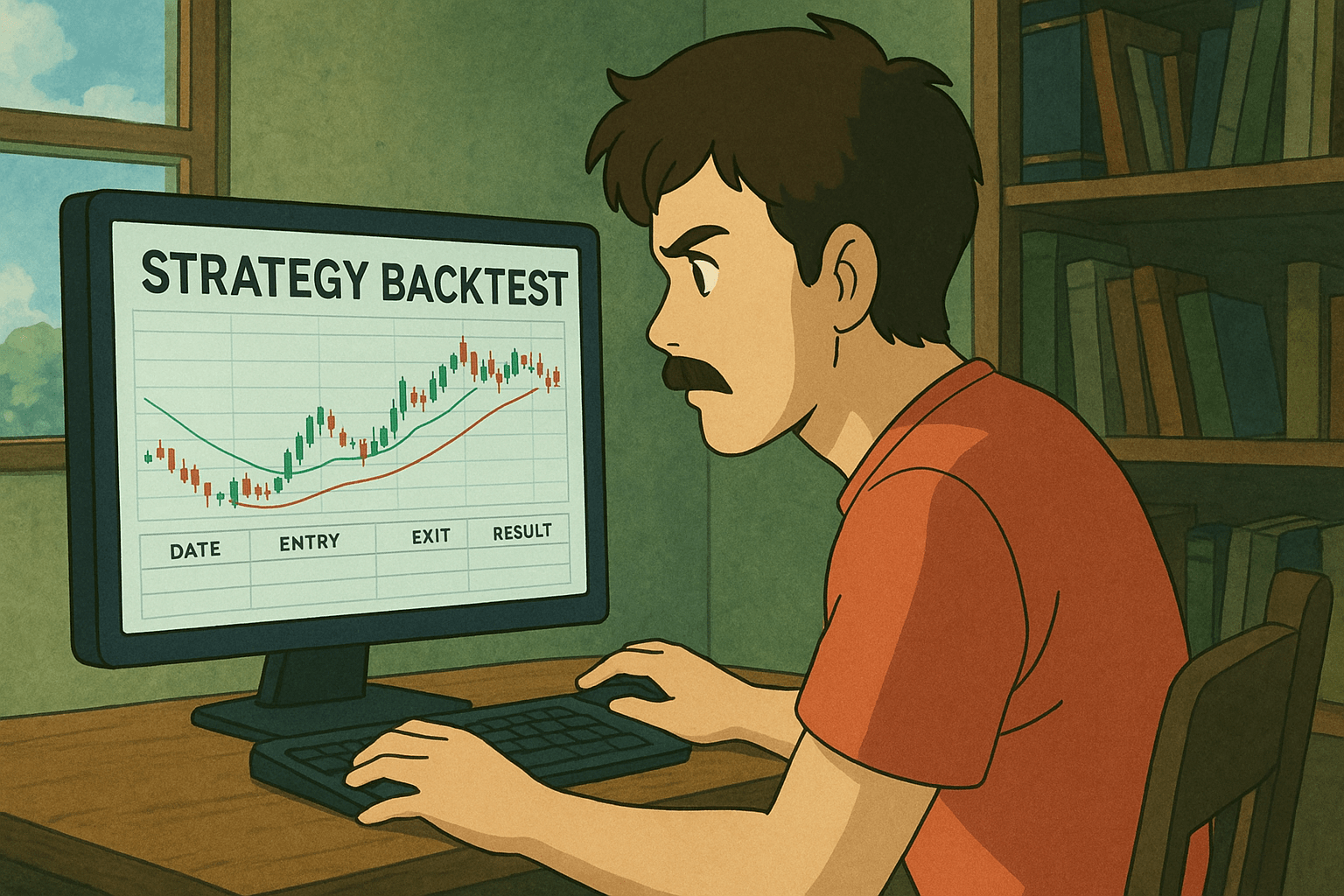In the options game, even the smartest playbook can sink you if you run it at the wrong moment. The market has a way of exposing those who skip their preparatory work, and in trading, that preparatory work is called backtesting. If you are serious about your trading journey, then understand and learn backtesting stock market strategies from scratch.
What Backtesting Means
At its core, backtesting is straightforward:
- Set clear trading rules.
- Run those rules over historical price charts.
- Check what the profit and loss would have looked like.
Think of it as asking yourself: “If I’d been running this exact plan over the last year, would I be compounding gains — or topping up my account from my day job?”
Backtesting strategies would not only give you profits but also confidence in trading in the market. Let’s now discuss 3 powerful backtesting stock market strategies that will help you to trade like a pro.
3 Powerful Options Trading Backtesting Strategies
When it comes to trading options, one of the biggest mistakes beginners make is jumping into live trades without testing their ideas.
That’s where backtesting comes in. Backtesting is the process of checking how your trading strategy would have performed in the past using historical market data. It helps you build confidence, avoid costly mistakes, and refine your edge before risking real money.
1. Spread Strategy Backtesting
Spreads are structured trades where you buy and sell options at different strikes to reduce risk. Two of the most common spreads are:
- Bull Call Spread – Buy an ATM (at-the-money) call and sell an OTM (out-of-the-money) call.
- Bear Put Spread – Buy an ATM put and sell an OTM put.
How to backtest:
- Pick a stock or index.
- Choose past expiry dates.
- Place the spread 20–25 days before expiry.
- Close it 3–4 days before expiry.
- Track how often the strategy gave profits vs losses.
Why it works:
Spreads are risk-defined and protect you from extreme losses. Backtesting helps you understand in which market conditions (bullish, bearish, or sideways) these spreads perform best.
2. Quarterly Results Trading Strategy
Earnings season creates volatility. Companies release results four times a year, and implied volatility (IV) typically spikes in the days leading up to the announcement. Traders can use this to their advantage.
Long Straddle before earnings is a powerful strategy that can reap maximum profits. To maximize gains, learn how to create a long straddle and to gain confidence backtest it by:
- Buy an ATM call + Buy an ATM put (same strike, same expiry).
- The goal is to benefit from the volatility build-up before results.
How to backtest:
- Look up past quarterly result dates for a stock (e.g., TCS, Infosys, Axis Bank).
- Check the IV movement 3–7 days before results.
- Simulate buying a straddle a few days before and see if rising IV or sharp moves in stock price led to profits.
You’re not betting on the result being good or bad—you’re betting on volatility and movement. Backtesting this lets you see which stocks reliably give IV spikes before earnings.
3. Volatility & Divergence-Based Backtesting
Sometimes the best trades come from technical signals combined with volatility cues. For example:
- Divergences (price vs indicator disagreement).
- Patterns like rising/falling wedges.
- High ATR (Average True Range), which indicates strong price moves.
How to backtest:
- Review historical charts for divergence or wedge patterns.
- Check what IV and ATR were doing at the time.
- Simulate taking trades (spreads, directional calls/puts) and track the outcome.
Why it works:
This approach helps you filter out “noisy setups” and focus only on high-probability trades supported by both technical analysis and volatility behavior.
Conclusion
Backtesting isn’t about predicting the future—it’s about understanding probabilities.
When you know how your strategy performed in 20–30 past scenarios, you can approach trading with clarity instead of guesswork.
Along with backtesting, it is important to understand how to adjust your positions in the live market to minimize losses. So, if you’re serious about options trading, theory alone won’t make you profitable. You need:
- Proven frameworks
- Hands-on practice
- Guidance from someone who has already walked the path
That’s exactly what we offer in our Options Trading Mentorship Program.
You’ll learn not just how to backtest strategies like these, but also how to:
- Build your trading systems
- Manage risk like a professional
- Avoid the emotional traps that wipe out most traders
Ready to trade smarter? Book a counselling session to know more about the mentorship program
Before investing capital, invest your time in learning Stock Market.
Fill in the basic details below and a callback will be arranged for more information:









